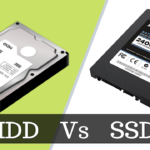
How to Purchase Additional Storage for Your iPhone.
Purchasing additional storage for your iPhone might be a difficult undertaking. Sometimes it’s unclear how to make the purchase, what options are available, or even how much it will cost. But you’ll soon have plenty of room for images, music, apps, and other data with only a few touches in Settings and a little amount of money in your Apple ID account. Here is all the information you require to purchase additional storage for your iPhone.
No matter how many gigabytes you have, it seems like there is never enough storage for all the things and programs you want to keep on your phone. Examining the capacity of your current phone can be like peering into a bottomless pit.

Thankfully, adding more space is now simpler than ever because Apple’s most recent iPhones now support up to 1TB. Depending on your type of user, it may be too little or too much, but if you find yourself running low on storage, here’s how to get extra.
Continue reading if you’re prepared to upgrade your device’s memory so that it can hold bigger files without experiencing any lag or crashes. In addition to giving you advice on how to allocate the appropriate amount of space for your particular requirements, we’ll show you exactly where to seek to expand your phone’s capacity. Are you ready? Let’s go shopping!
How to Make Your iPhone More Space-Friendly
The quantity of storage space on your iPhone is probably starting to run low if you’ve been using it for a long time. Thankfully, there are a number of methods to increase the amount of space on your smartphone that may be used for images, apps, and other types of material.
If you no longer require pictures or videos, you can choose to remove them. To do this, launch the Photos app, then press Select in the upper right corner before choosing a single image or a group of images to remove. Since unneeded apps frequently occupy a lot of memory, you can also remove those that you haven’t used in months.
Reducing backups might also help you save a lot of space if you use iCloud. To do this, navigate to Settings > iCloud > Storage & Backup > Manage Storage, then press each device under Backups to delete unnecessary data from its backup file. Finally, deleting caches will free up some additional space without significantly affecting your phone’s functionality. To do this, go to Settings > Safari and then scroll down until you see Clear History and Website Data.
You should have a large quantity of extra storage space on your iPhone with no effort if you follow these guidelines.
Options for Cloud Storage
You might want to think about getting a cloud storage option if the storage on your iPhone is getting low. You may increase the amount of space you have for pictures, movies, and apps by choosing one of the many online storage choices available.
Microsoft OneDrive, Dropbox, Google Drive, and iCloud Drive are a few of the most well-known cloud storage providers. All of these services provide more storage capacity at a reasonable price.
You can select from a variety of plans with varied data (and cost) levels based on your demands. Additionally, you will be able to utilise practical features like file sharing and device syncing. All things considered, these fixes offer a fantastic option to increase your iPhone’s storage without going over budget.

Acquiring More Storage for Your iPhone
You can purchase more storage straight from Apple if you own an iPhone and find that you need more capacity. This usually entails upgrading to one of the higher tiers of your iCloud storage plan, which include 50GB for $0.99 per month, 200GB for $2.99 per month, or 2TB for $9.99 per month, though there are other possibilities as well.
By exchanging your old phone through Apple’s trade-in program or purchasing an external hard drive, such as SanDisk’s iXpand Flash Drive, to save images and videos off the cloud, you can also free up space on your phone itself.
If you don’t want to completely transition to Android, it might be worthwhile to consider getting a larger device in place of your existing one if you truly need more space than what these options provide. However, since upgrades are expensive, it could be wiser to start small and become accustomed to improved data management before making any significant storage expenditures.




